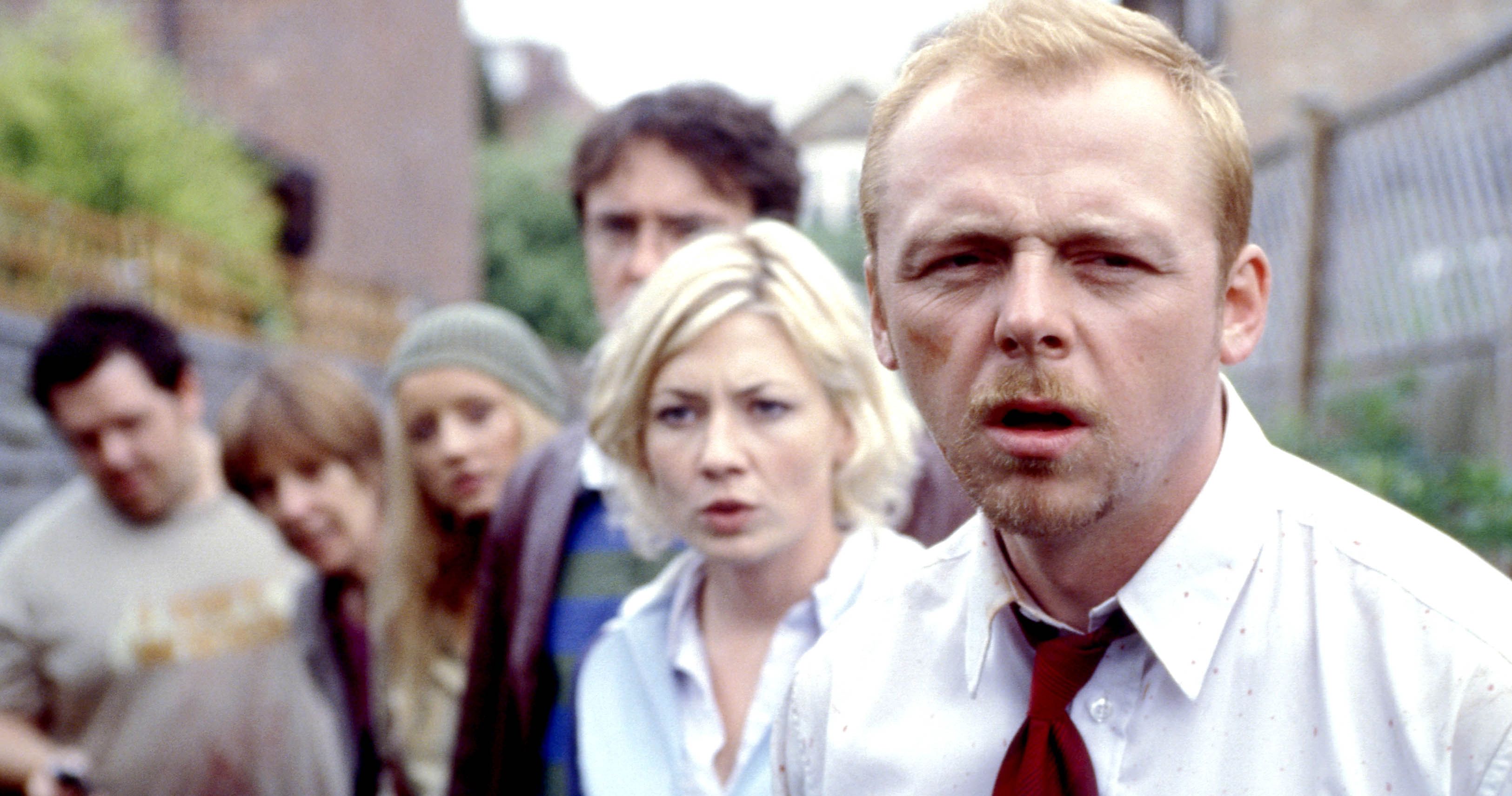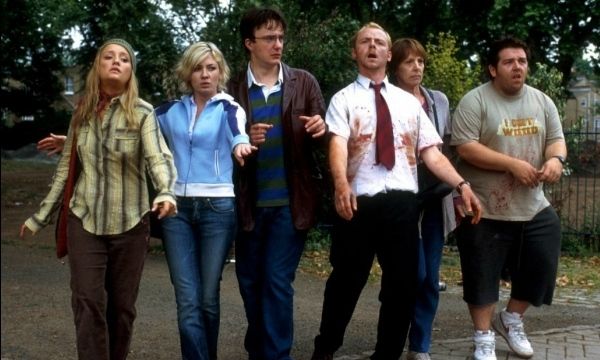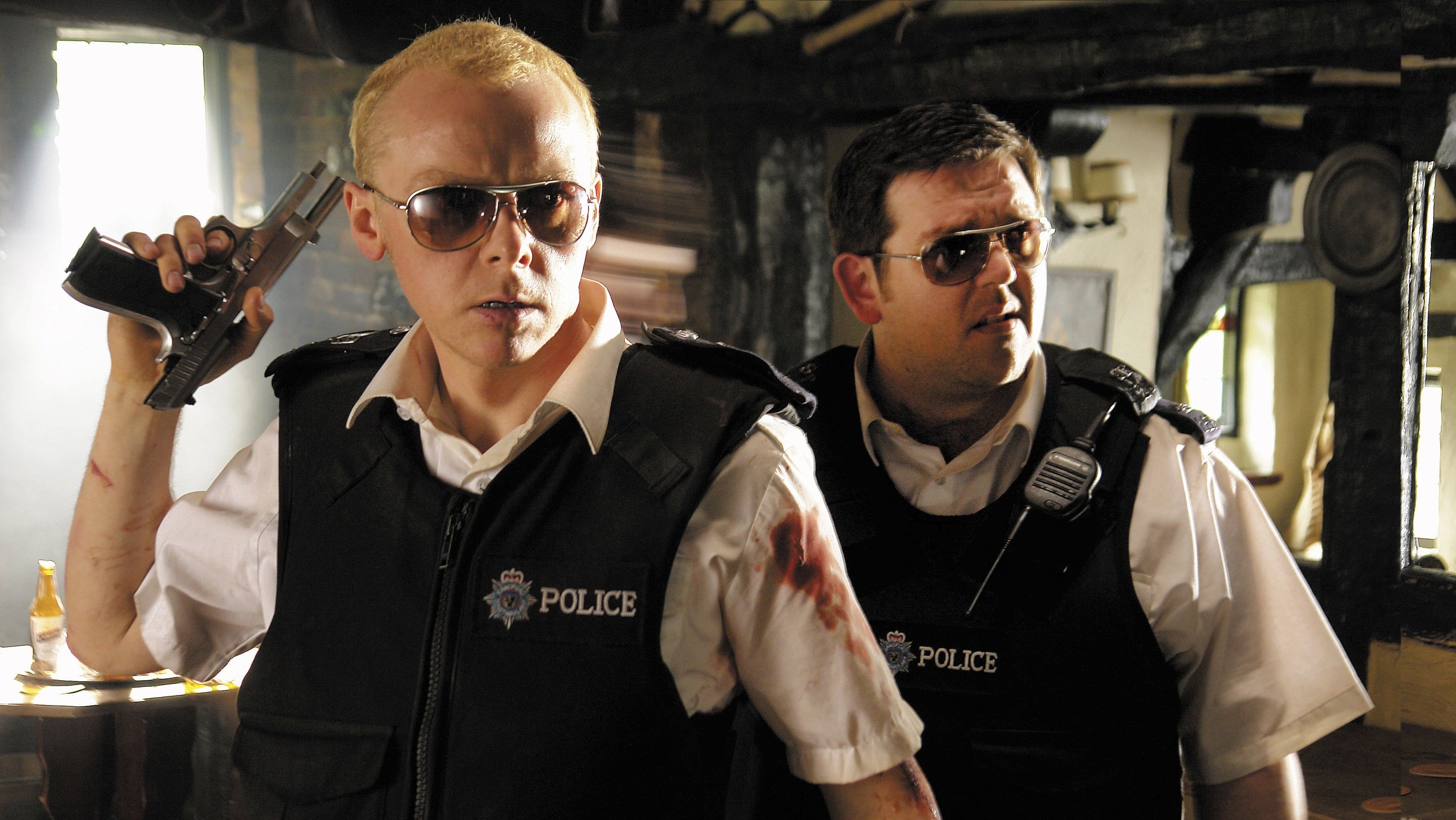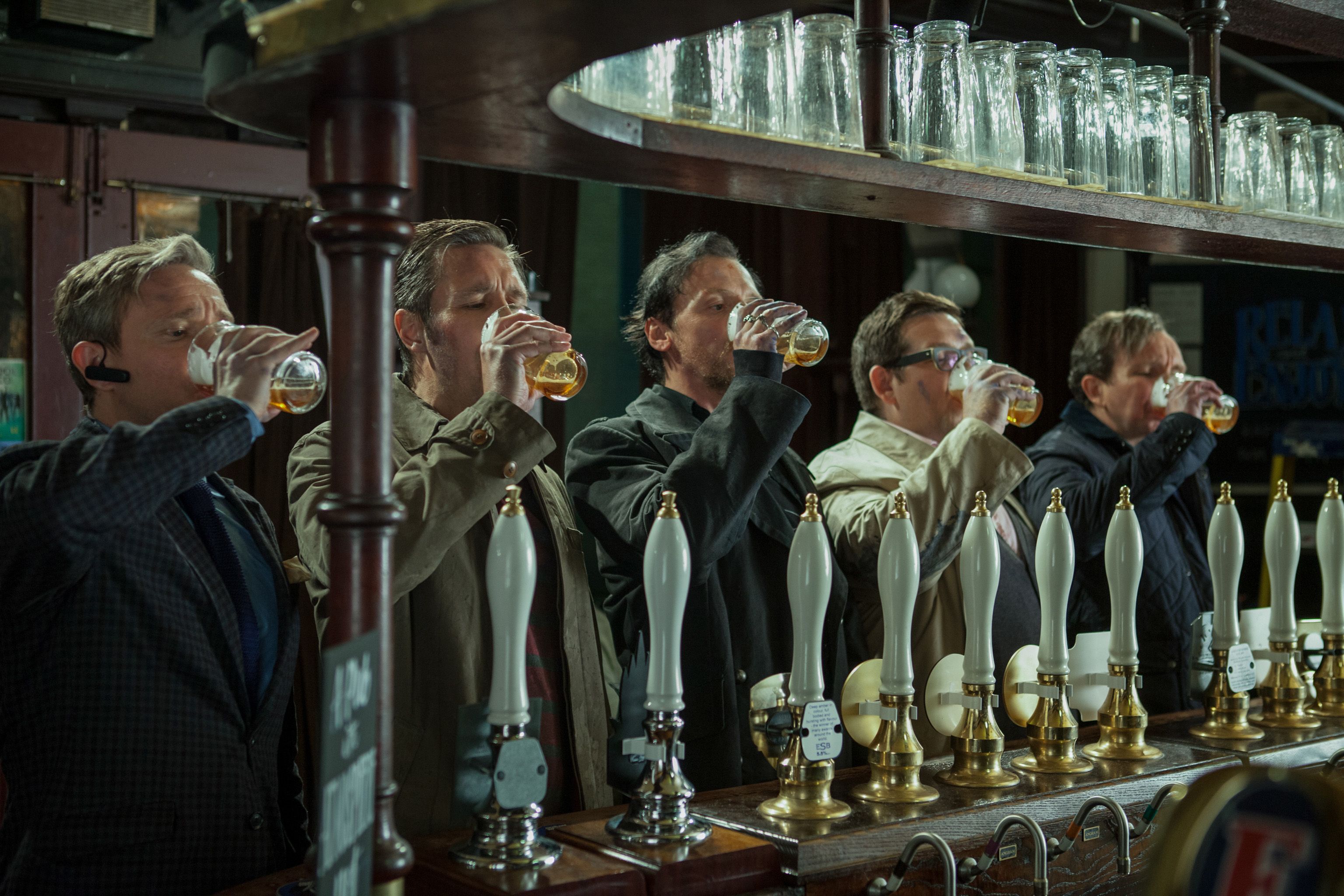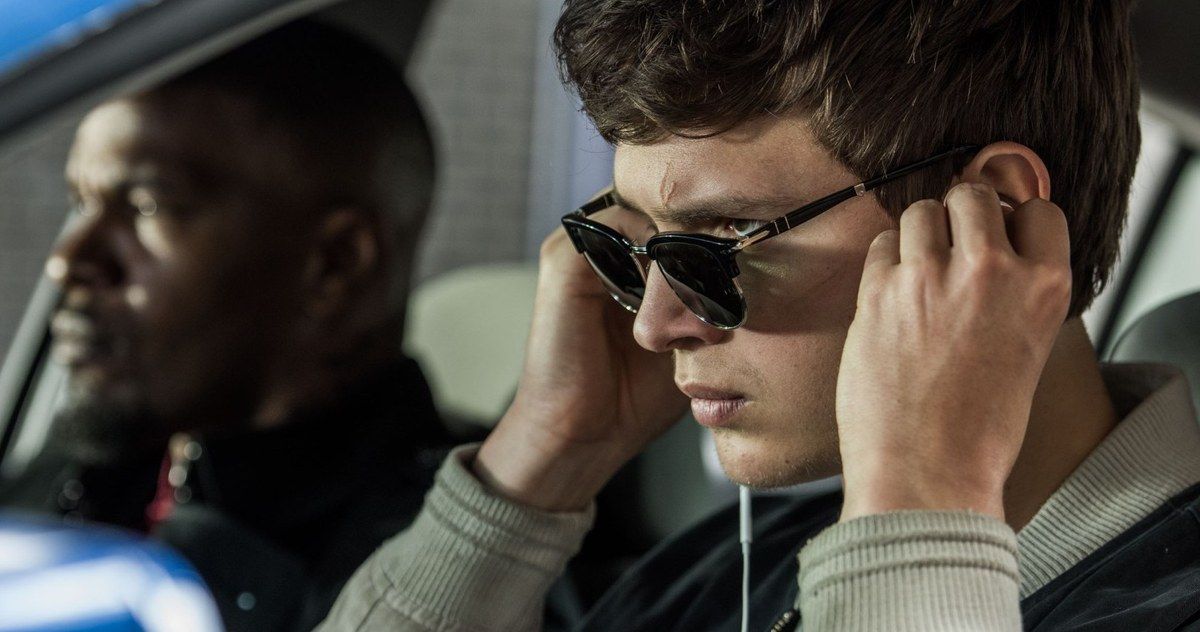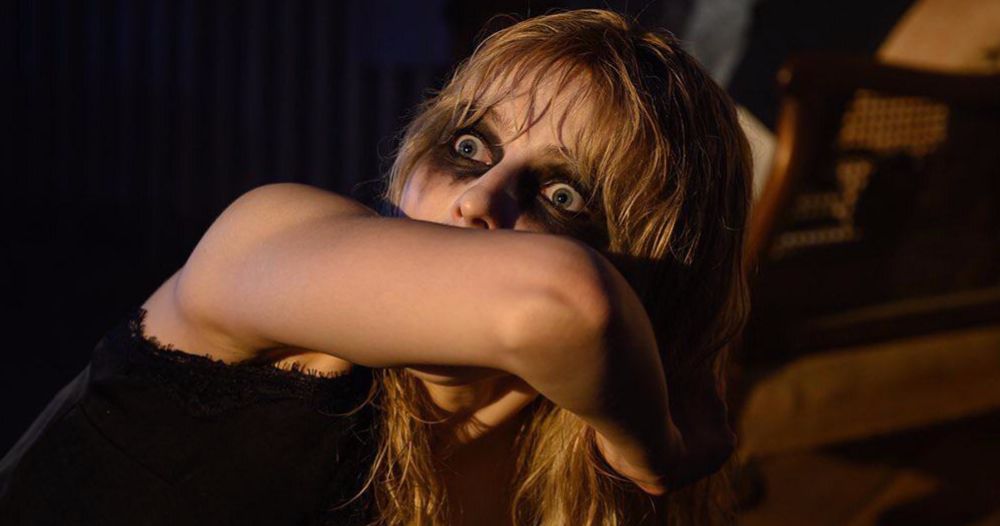Sometimes when trying to embrace a film, it can be difficult to relate with a protagonist on screen. As humans, we’re naturally flawed, so being thrown into a story where the hero we’re rooting for has the perfect physique and is motivationally flawless throughout, can be a little jarring.
Yes, we love the Luke Skywalkers and the Supermans (men?) but seeing ourselves in our heroes is what really drives our connections to characters. Recently, Edgar Wright released his psychological thriller Last Night in Soho, and the main character of Eloise is timid and meek, but also develops bravery to take chances without abandoning those other character traits.
Wright has a gift in highlighting character growth despite their flaws, showing that characters don’t need to be perfect to achieve the worthiness of winning the day, cementing them as memorable and iconic. This has been a constant in Wright's work throughout his career, so let's take a look at a few examples.
Shaun Of The Dead
Going back to Wright’s first major success, Shaun of the Dead (2004), Shaun (Simon Pegg) and Ed (Nick Frost) were flawed at their very core. Shaun’s knack for inattention and Ed’s laziness and disregard for personal space would seemingly make them intolerable to the audience in most film standards. Because the two recognize their flaws, and actively maneuver around them to still triumph, it makes them endearing. Why? Because we all do this every single day of our lives.
We've all forgotten to make the dinner reservation or droned through the workday on autopilot. It means our characters are flawed, not failures. It's Shaun and Ed's development that makes them so iconic. Each character looks at their own faults, knows what they need to do to fix them, and actively works on them as the film progresses. For example, Ed's self-serving attitude is on full display for much of the film, putting his own wants ahead of the needs of everyone he's close to.
By the end of the film, he makes the ultimate sacrifice by staying behind and seemingly giving up his life in order to allow a chance for Shaun and Liz to escape. That's growth.
Hot Fuzz
In Hot Fuzz (2007), an almost opposite flaw is used for Simon Pegg's Nicholas Angel character. He's too attentive, putting his work and his awareness to detail before everything else. His personality becomes so extreme that his own department ships him off to a remote town for making them look bad. It isn't until Angel meets Danny Butterman (Nick Frost), that he's able to truly self-reflect on himself to solve the case at hand.
The two are almost polar opposites of each other's character types, making their gradual trek to a success completely leanient on each other for balance. The characters are iconic because they aren't whole, and it takes both of them to complete one another.
The World's End
Edgar Wright changes up his relatable character flaw style a bit for The World's End (2013) with the creation of Gary King (Simon Pegg). This is really the first one of Wright's characters we see actively struggling against mental illness. King suffers from both depression and in-turn alcoholism, with the two feeding off each other for the majority of the film.
Characters with mental health issues aren't generally portrayed as heroic, and much of the film presents King as an insufferable jerk, willing to lie, cheat and steal to get what he wants. Though maybe the tell-tale signs were noticeable early on to those that struggle with depression, it isn't until the audience is let in on King's attempted suicide that they feel empathy towards him. Still, the film does a wonderful job showing that just because King doesn't feel worthy, it doesn't me he isn't.
King is able to not only able to push through his mental illness to succeed but actually thrives in the end of the film. It's a nice a tough to remind those who struggle that mental illness doesn't define who you are.
Baby Driver
When Wright directed Baby Driver (2017), Baby (Ansel Elgort)'s flaws were a major part of his personality by design. The grief of losing his parents as a child molded Baby into the criminal he presently became. His character gained power over his physcial disability of tinnitus by finding silence and moments of cathartic calming in his music, some of which is sang by his deceased mother.
Throughout the film, Baby struggles with his part as a criminal against his desire to be free from crime. When things of off the rails, he's able to commit to growth and do the right thing. I think at some point in every person's life, they're forced to choose between right and wrong, and find the growth they need by choosing what's right. Baby is memorable because he is relatable.
Last Night In Soho
That brings us to Wright's most recent film, Last Night in Soho (2021). Eloise (Thomasin McKenzie) begins the film as a shy young woman who is seemingly frsh out of the country-side and doesn't adapt well to big city. The growth in Eloise's character comes from within her dreams, when she's transported back in time and sees herself as (yet also accompanies) Sandie (Anya Taylor-Joy), a much more flashy and outgoing character.
After many instances of essentially becoming Sandie, Eloise finds her bravery to explore outside of her comfort zone. She has every chance to turn back to her old personality but continues to thrive through this new one. Eloise shows us that we're not defined by our habits and just because we're scared, doesn't mean we have to give up.
The iconography of Edgar Wright's characters comes from their relatability. This is the reason we remember these characters far after we've seen the films, even for just the first time. They stick with us because they are us.

